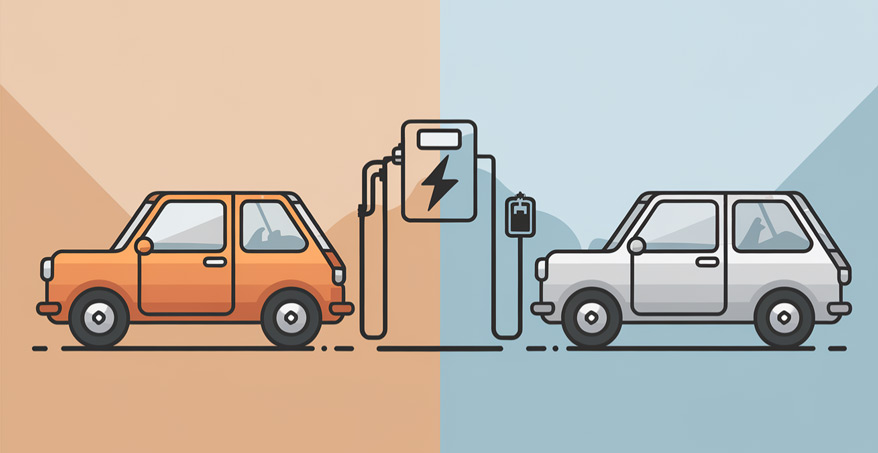Understand the key differences between hybrid and plug-in hybrid vehicles.
As more drivers embrace eco-friendly vehicles, two terms often come up: Hybrid and Plug-In Hybrid. While both types aim to reduce emissions and improve fuel efficiency, they work in slightly different ways. Understanding these differences can help you decide which option is best suited for your driving needs.
What is a Hybrid Vehicle?
A Hybrid car combines a traditional gasoline engine with an electric motor. The vehicle uses both power sources to maximize fuel efficiency. In most hybrid models, the electric motor assists the gas engine, especially during low-speed driving or stop-and-go traffic, which helps reduce fuel consumption.
How it works:
- The gasoline engine powers the car during highway speeds or when more power is needed.
- The electric motor kicks in during city driving or when idling.
- A regenerative braking system recharges the electric battery while driving, so there’s no need to plug the car in.
Pros:
- No charging needed – relies on gas for longer trips.
- Improved fuel efficiency over standard gasoline cars.
- Generally less expensive than plug-in hybrids.
What is a Plug-In Hybrid?
A Plug-In Hybrid (PHEV) takes the hybrid concept a step further by offering a larger battery that can be recharged via an external power source. This allows the car to drive on pure electric power for a limited distance before the gasoline engine kicks in. Most PHEVs offer 20-50 miles of electric-only range, ideal for short commutes.
How it works:
- The car runs on electricity for shorter distances, like commuting or errands.
- Once the battery is depleted, the gas engine takes over, much like a traditional hybrid.
- Drivers can plug the car into a standard electrical outlet or a charging station to replenish the battery.
Pros:
- Electric-only driving for short trips, reducing fuel use.
- Lower emissions compared to traditional hybrids.
- Flexibility to use gas for longer trips without worrying about charging.
Key Differences
- Battery Size: Plug-in hybrids have larger batteries that can be charged externally, allowing them to run solely on electric power for longer distances.
- Charging: While hybrids recharge their battery using regenerative braking, plug-in hybrids need to be plugged in to fully recharge their batteries.
- Electric Range: Plug-in hybrids can operate on electric power alone for a certain range (typically 20-50 miles), while regular hybrids switch between electric and gas engines without being able to run exclusively on electric for long distances.
Which is Better for You?
- Hybrids are ideal for those who want better fuel economy without worrying about charging, making them great for long-distance drivers or those without access to charging stations.
- Plug-In Hybrids suit drivers with shorter commutes who want to take advantage of electric-only driving while keeping the flexibility of using gasoline for longer trips.
Choosing between a Hybrid and a Plug-In Hybrid largely depends on your driving habits and access to charging. Both options offer a blend of fuel efficiency and lower emissions, but understanding the distinctions can help you make a more informed decision.


